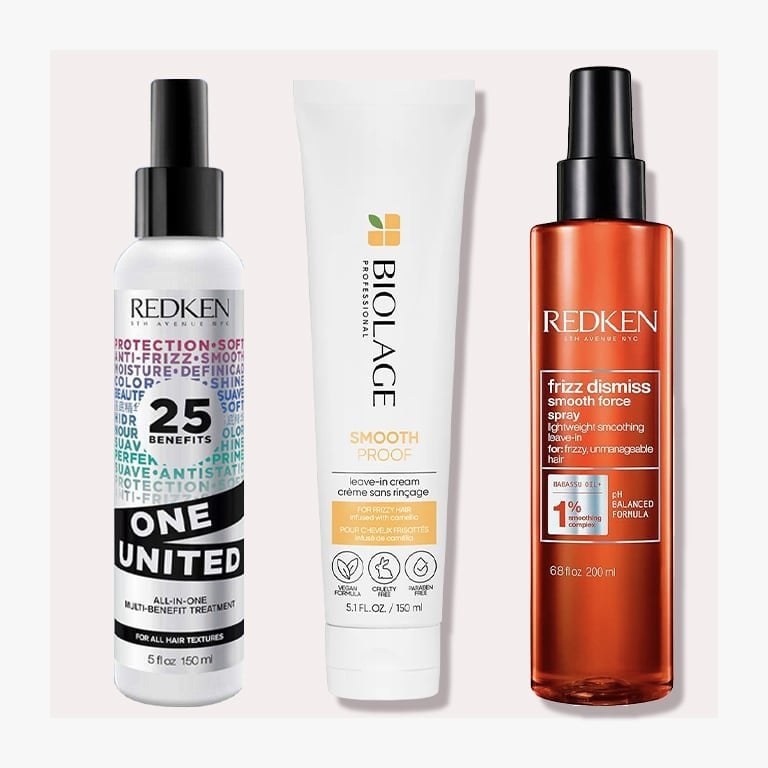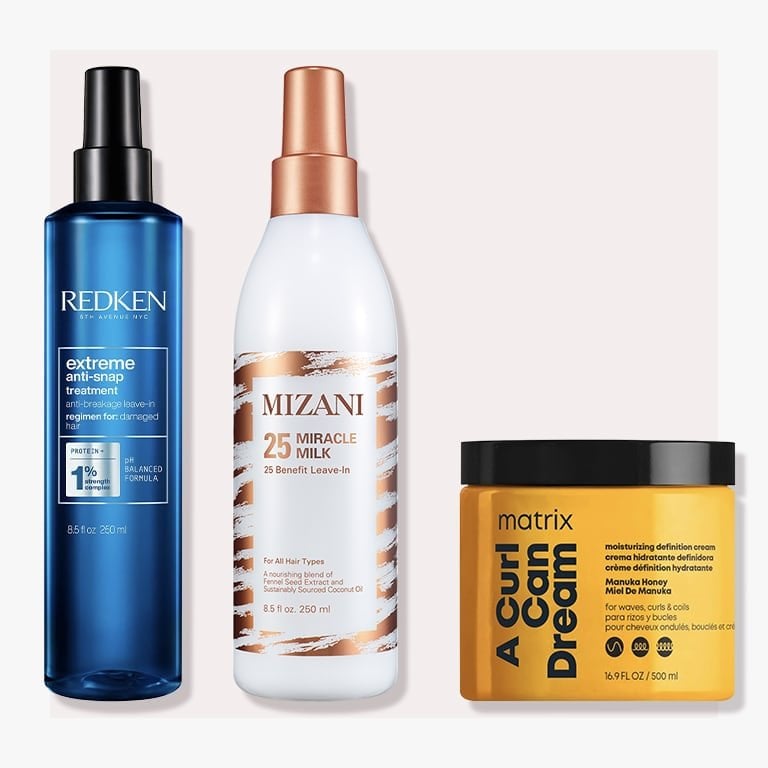How To Sleep With Wet Hair and Still Have It Look Good the Next Day
July 10, 2024
How To Sleep With Wet Hair According to Your Hair Type
Sometimes, there’s no way around going to bed with a damp mane. In those cases, knowing how to sleep with wet hair without getting it frizzy, damaged, or risking your scalp health can come in handy. Keep reading for a breakdown of the best way to sleep with wet hair according to your hair type.
Straight hair
If you have straighter hair, Stenson suggests towel-blotting your strands to remove as much water and moisture as possible. This step is a must because it minimizes the risk of breakage and frizz. You’ll also want to apply a lightweight leave-in treatment, such as the Kérastase 8H Magic Night Hair Serum, from the mid-shaft through the ends to help prevent frizz and knots. We love this luxe leave-in because it helps protect hair against pillow friction and leaves the hair soft and easy to style. Alternatively, try the L'Oréal Paris Elvive Hyaluronic Plump Moisture Serum. The hyaluronic acid-infused formula plumps and reshapes hair while locking in moisture for up to 72 hours.
After working your chosen leave-in throughout your strands, divide your hair into two braids. Stenson favors French braids for their secure hold, but Saviano says any braid will do. This technique will create natural waves and reduce the risk of tangles. In the morning, remove the braids and add a texture-building spray to emphasize waves for a more lived-in look. The Matrix Total Results Miracle Creator Multi-Benefit Treatment Spray is an excellent choice as it helps prevent breakage, adds moisture, and fights frizz in one single step.

Wavy hair
Wavy hair tends to be more prone to frizz than straight strands, especially after sleeping on wet hair. To help prevent an unmanageable mane come morning, blot your hair dry, then apply a leave-in conditioner spray, anti-frizz cream, or serum—whichever you prefer. Saviano notes that it’s essential to use the right amount of product depending on the thickness and length of your hair: Too much product can leave hair weighed down and greasy, but too little product may make hair difficult to manage.
For lightweight moisture, we suggest the Redken Frizz Dismiss Smooth Force Leave-In Conditioner Spray. The sulfate-free formula detangles, smooths, and protects hair without weighing it down. Or, spritz your hair with the Redken One United Multi-Benefit Treatment Spray. This multi-tasking mist for all hair types and textures helps nourish, detangle, smooth, and condition hair while minimizing frizz. Plus it’s color-safe and helps protect strands from external stressors that may lead to premature fading.
If you’d prefer something a bit richer, try a leave-in cream, like the Biolage Professional Smooth Proof Leave-In Cream. Keep in mind that you don’t need to use a ton of product—it’s better to start with a little and add more as needed.
Once you’ve applied your frizz-fighting leave-in treatment, Stenson suggests creating two loose (but secure!) buns on opposite sides of the head. This method can help maintain your natural wave pattern while preventing excess frizz. When you wake up, simply release your hair from the buns and finish with some lightweight hairspray for hold, if needed.

Curly hair
Knowing how to sleep with wet, curly hair is crucial since this hair type tends to be on the drier side and can be susceptible to frizz and tangles. To prep curly hair for wet sleeping, blot to remove as much moisture as possible before applying a hydrating leave-in treatment.
We love the Mizani 25 Miracle Milk Heat Protectant Leave-In Conditioner, as it moisturizes, detangles, and enhances curls while fighting frizz. Plus, it offers heat protection—so if you do need to reshape some strands with the curling iron in the morning, you don’t have to worry about excessive damage. If breakage is a concern, try the Redken Extreme Anti-Snap Anti-Breakage Leave-In Conditioner, which deeply conditions and helps smooth the hair cuticles to help prevent breakage.
To follow, grab a curl-defining leave-in treatment—rather than a gel or mousse, which Saviano says can leave the hair crunchy—and distribute it evenly throughout your hair. The Matrix A Curl Can Dream Moisturizing Cream is a great pick, particularly if your curls are on the drier side. The Manuka honey-infused formula provides moisture and definition without any crunchiness, stiffness, or flaking.
Follow up by dividing your hair into two to four loose braids to soften up the curls, tame frizz, and control volume. In the morning, release your hair from the clips or braids and shake and re-shape your spirals as needed.

Coily hair
For coily hair, forget everything Stenson said about towel-blotting hair. Instead, he suggests working with fully saturated hair and prepping with a leave-in treatment and curl moisturizing cream. The Mizani True Textures Curl Define Styling Cream is a fantastic choice, as it provides intense moisture while helping to soften and add shine to coily hair.
After working the rich, olive oil-infused treatment throughout your mane, create four to six two-strand twists and secure them with either clips or silk scrunchies. Cover your hair with a silk scarf or bonnet overnight to avoid any disturbances. The next morning, remove the twists and apply a lightweight oil to ensure a soft definition at the ends. The Garnier Fructis Triple Nutrition Marvelous Hair Oil Elixir is one of our must-haves since it contains a trio of nourishing oils (avocado, olive, and almond) and nourishes the hair without any greasy feel. The Mizani 25 Miracle Nourishing Hair Oil is another great option, as it’s formulated specifically for textured hair.
Finally, remember that while knowing how to sleep with wet hair safely is useful, it’s best to avoid it whenever possible. Take a shower in the morning or blow dry your hair (with a heat protectant!) before bed—your strands will be the better for it.

Next Up: Fight Frizz and Flyaways With Our Favorite Hair Products

